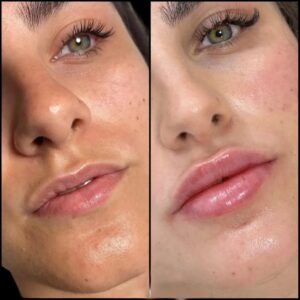
Melasma is a common skin condition that causes dark, discolored patches, usually on the face. It is especially prevalent among women, though men can also be affected. These dark spots tend to appear on the cheeks, forehead, nose, and upper lip, making individuals self-conscious about their appearance. While melasma is not harmful to health, it can significantly affect one’s confidence and quality of life.
Fortunately, there are various methods available to treat melasma and pigmentation, ensuring that people can manage the condition effectively. From pigmentation treatment to laser treatment for pigmentation, there are several options that target the root causes of this skin condition. This article will explore the different approaches to managing pigmentation issues and provide safe and effective solutions.
What Is Pigmentation?
Pigmentation refers to the color of the skin, which is determined by the amount of melanin produced by the body. Melanin is a pigment responsible for giving color to the skin, hair, and eyes. However, when the body produces too much melanin in specific areas, dark patches can form on the skin, leading to conditions like melasma, sun spots, age spots, or post-inflammatory hyperpigmentation (PIH).
Melasma specifically occurs when excess melanin accumulates in the skin. It is often triggered by hormonal changes, such as pregnancy (often referred to as the “mask of pregnancy”), the use of birth control pills, or hormone replacement therapy. Other factors like prolonged sun exposure, stress, and genetic predisposition can also contribute to the development of melasma.
Causes of Melasma and Pigmentation
Understanding the underlying causes of pigmentation issues is the first step in determining the best treatment approach. Several factors can contribute to melasma and other forms of pigmentation, including:
- Hormonal Changes: Pregnancy, birth control, and hormone therapy are common causes of melasma, as hormonal fluctuations increase melanin production.
- Sun Exposure: UV rays stimulate melanin production, which can worsen pigmentation. This is why pigmentation often appears or worsens during the summer months or after prolonged exposure to the sun.
- Genetics: Some people are genetically predisposed to developing pigmentation issues, and melasma can run in families.
- Medication: Certain medications, like oral contraceptives or hormone therapy, can increase the risk of developing melasma.
- Skin Injury: Post-inflammatory hyperpigmentation (PIH) can occur after skin trauma, such as acne, burns, or chemical peels.
Safe and Effective Methods for Treating Pigmentation
Treating pigmentation, particularly melasma, requires a multi-pronged approach. Some treatments can be done at home, while others require professional intervention. Below are some of the most popular and effective methods for addressing pigmentation issues:
1. Topical Treatments for Pigmentation
Topical treatments are often the first line of defense in managing pigmentation. Many products are available over the counter or through prescription, which can help fade dark spots over time.
Hydroquinone: This is one of the most commonly prescribed ingredients in pigmentation treatments. Hydroquinone works by inhibiting melanin production, thereby lightening the dark spots. It’s available in over-the-counter formulas at lower concentrations, and higher concentrations can be prescribed by a dermatologist.
Vitamin C: Known for its brightening properties, Vitamin C is an antioxidant that helps lighten pigmentation by reducing melanin production. It also protects the skin from further sun damage, which can prevent pigmentation from worsening.
Retinoids: Retinoids are derivatives of Vitamin A and work by increasing cell turnover, helping the skin to shed dead skin cells more quickly. This process can help fade dark spots over time.
Azelaic Acid: This naturally occurring acid has anti-inflammatory and antibacterial properties. It helps reduce melanin production and is gentle enough for sensitive skin.
Niacinamide: This form of Vitamin B3 helps reduce pigmentation and also has anti-inflammatory properties that can calm the skin and reduce redness.
When using any topical treatments, it is important to remember that consistency is key. It can take weeks or even months to see noticeable improvement, and sun protection is essential to prevent further pigmentation.
2. Chemical Peels for Pigmentation
Chemical peels involve the application of a chemical solution to the skin, which causes the outermost layers of the skin to peel away. This process helps improve the appearance of dark spots and promotes the growth of new, more even-toned skin.
Chemical peels come in various strengths, with lighter peels being available for home use and stronger peels administered by skincare professionals. The most common ingredients in chemical peels for pigmentation include alpha-hydroxy acids (AHAs) like glycolic acid, salicylic acid, and trichloroacetic acid (TCA).
Chemical peels can be highly effective for treating sun spots, melasma, and post-inflammatory hyperpigmentation (PIH). However, there are risks of irritation or worsening pigmentation if not used properly, so it’s important to consult with a professional before opting for this treatment.
3. Laser Treatment for Pigmentation
For those seeking faster results, laser treatment for pigmentation can be an excellent option. Laser treatments work by targeting the melanin in the skin with focused light energy, breaking it down and allowing the body to remove it naturally. There are several types of lasers used for pigmentation, including:
- Fractional CO2 Laser: This laser is one of the most effective treatments for melasma and deep pigmentation. It works by penetrating the skin deeply, stimulating collagen production, and targeting the melanin in the skin.
- Q-switched Nd:YAG Laser: This laser targets the pigment without damaging the surrounding tissue, making it effective for superficial pigmentation like sun spots, age spots, and melasma.
- Pico Laser: The Pico laser uses ultra-short pulses of energy to break down pigmentation more efficiently, making it suitable for stubborn pigmentation.
While laser treatment for pigmentation is highly effective, it can be costly, and multiple sessions may be required. Additionally, there may be some downtime involved, as the skin can be sensitive after treatment. It’s crucial to follow aftercare instructions and avoid sun exposure after treatment.
4. Lip Pigmentation Treatment
Lip pigmentation is another common concern, with darkening of the lips occurring due to various factors, including smoking, sun exposure, or hormonal imbalances. For those struggling with lip pigmentation, several treatments can help lighten and restore the natural color of the lips:
- Exfoliation: Regular exfoliation of the lips can help remove dead skin cells and promote the growth of new skin. This can be done using a lip scrub or a homemade remedy with sugar and honey.
- Lip Balms with SPF: Since sun exposure is a major contributor to lip pigmentation, using a lip balm with sun protection is essential. SPF will protect the lips from harmful UV rays that can cause further darkening.
- Topical Treatments: Just like the skin on the face, the lips can benefit from products containing Vitamin C, niacinamide, and other brightening agents. These can help reduce lip pigmentation over time.
- Laser Treatment for Lips: Just as with facial pigmentation, lip pigmentation treatment may also involve laser treatments, such as Q-switched lasers or fractional lasers, to lighten the dark areas of the lips.
While these treatments are generally safe, it’s important to be gentle with the sensitive skin on the lips and avoid harsh chemicals that could cause irritation.
Preventing Pigmentation
Prevention is always better than treatment, especially when it comes to pigmentation. To prevent melasma and other forms of pigmentation from worsening, consider adopting the following practices:
- Sun Protection: Always wear sunscreen with broad-spectrum protection (SPF 30 or higher) to prevent further darkening of existing spots and to protect the skin from UV rays. Reapply sunscreen every 2 hours, especially if you’re outdoors.
- Avoid Excessive Sun Exposure: Try to avoid the sun between 10 AM and 4 PM when UV rays are strongest.
- Use Protective Clothing: Wearing hats, sunglasses, and long sleeves can help protect your skin from harmful UV rays.
- Be Mindful of Hormonal Changes: If you notice pigmentation changes due to hormonal fluctuations, consider speaking with a healthcare provider about possible alternatives or adjustments to medication.
Conclusion
Treating pigmentation, especially melasma, can be a gradual process that requires patience and consistent care. From pigmentation treatment products to laser treatment for pigmentation and lip pigmentation treatment, there are several safe and effective methods available. It’s important to consult with skincare professionals to determine the best approach for your skin type and condition.
Ultimately, the key to managing pigmentation lies in prevention, early treatment, and a dedicated skincare routine. With the right tools and knowledge, achieving a more even skin tone is entirely possible.



